A variety of chips with crossing channels either with T or double-T junctions are available. Different outer formats ranging from the microscopy slide format, 25.5 mm x 75.5 mm, to extended size platforms with 95.5 mm x 16 mm x 1.5 mm or 141 mm x 16 mm x 1.5 mm respectively are possible. The maximum available standard channel length is 120 mm. As fluidic interfaces, simple through-holes for the filling with pipettes or female Luer adapters are available. Extended Size Platform I is also available with a thread for LabSmith interfaces. One of the most common applications of this chip category is the use in capillary electrophoresis.
Extended Size Platform I
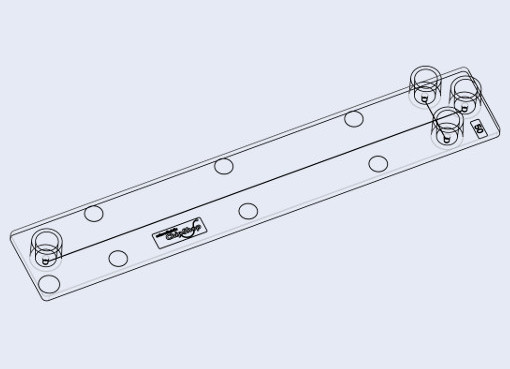
Schematic Drawing of Fluidic 82
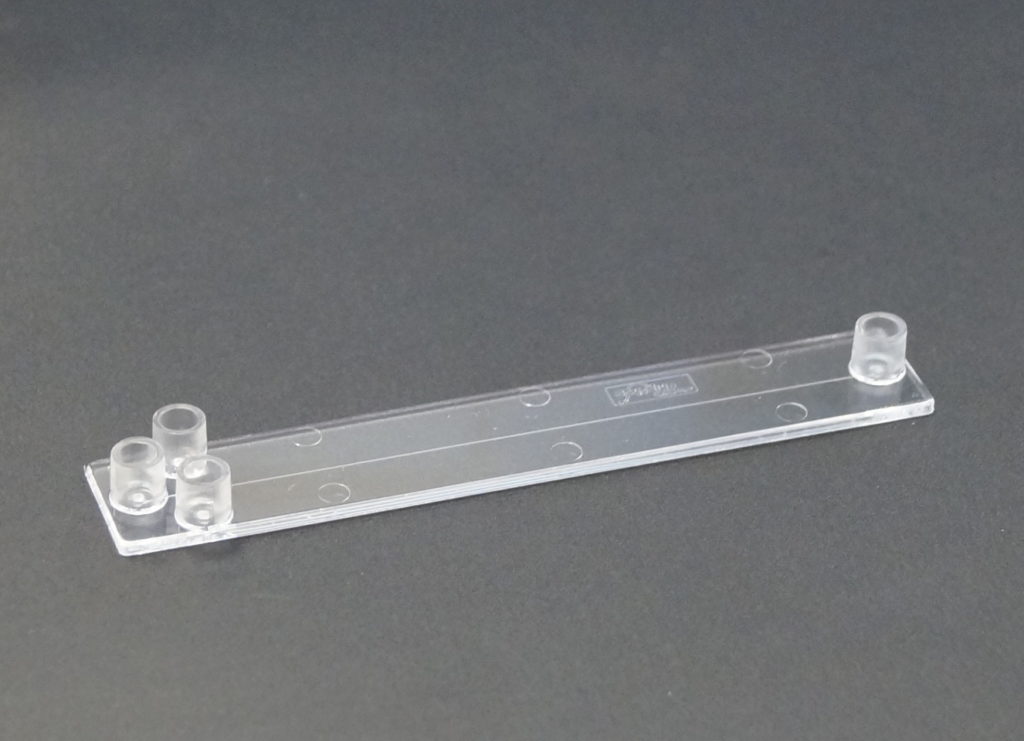
Fluidic 82

Schematic Drawing of Fluidic 106

Fluidic 106

Schematic Drawing of Fluidic 166

Fluidic 166

Schematic Drawing of Fluidic 201

Fluidic 201

Schematic Drawing of Fluidic 202

Fluidic 202

Schematic Drawing of Fluidic 394

Fluidic 394

Schematic Drawing of Fluidic 395

Fluidic 395
![]()
Extended Size Platform II
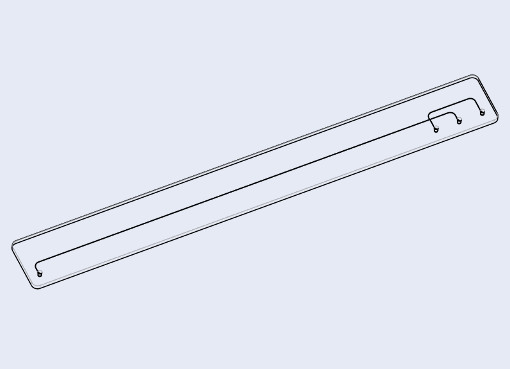
Schematic Drawing of Fluidic 189
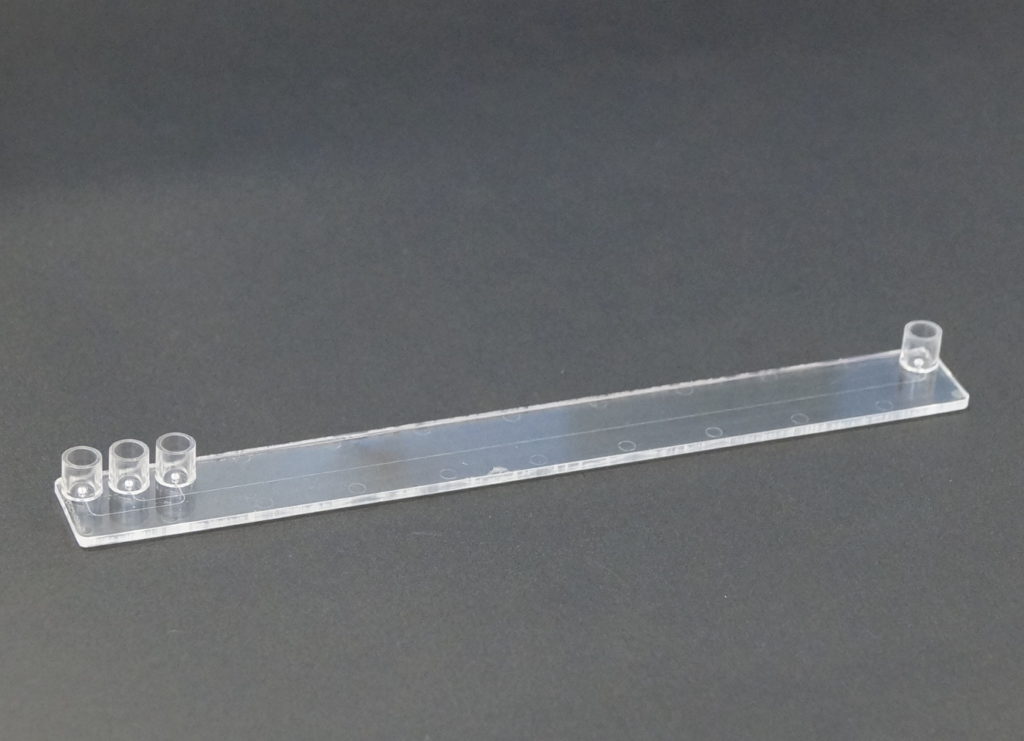
Fluidic 189
![]()
Microscopy Slide Format
These chips offer two separate channel structures with crossing channels on each device. One of those with, one without a channel offset.
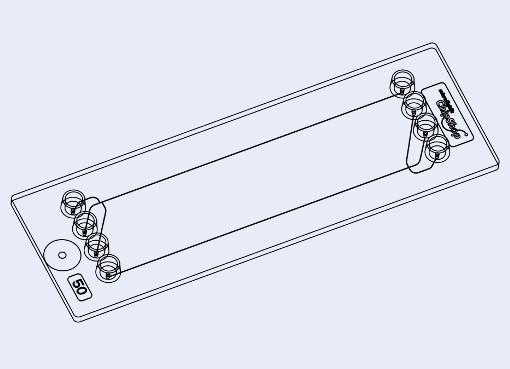
Schematic Drawing of Fluidic 160
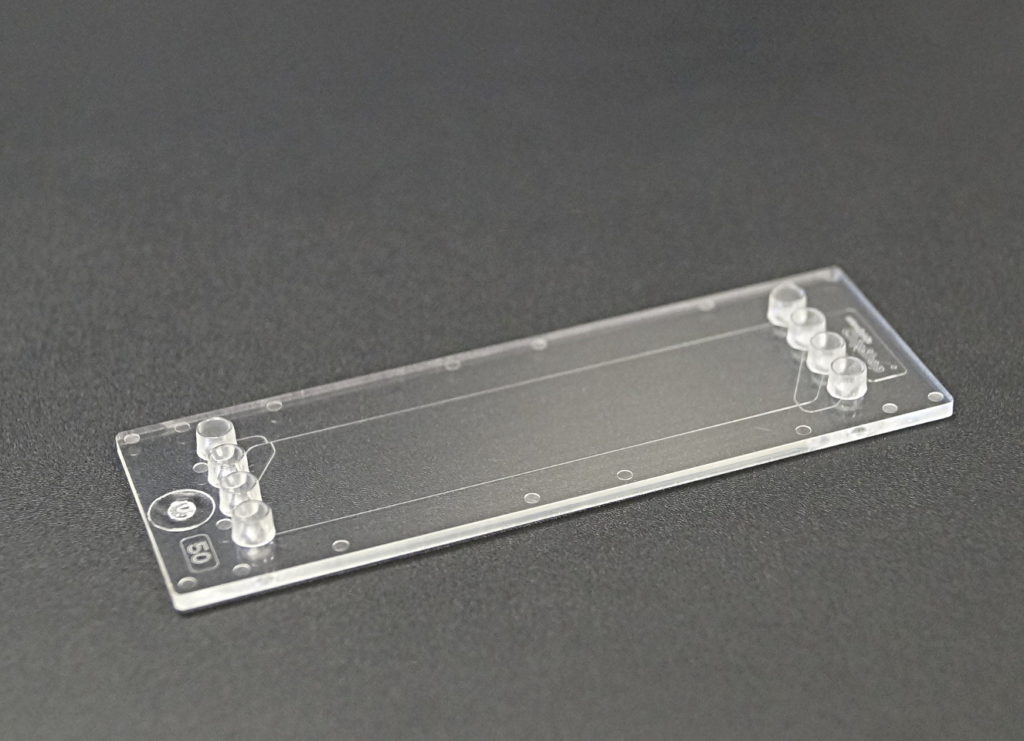
Fluidic 160
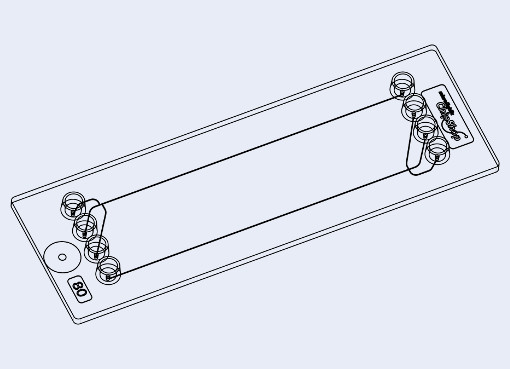
Schematic Drawing of Fluidic 161

Fluidic 161
![]()
Contact Mode
The variation of the cross-shaped channel chips with through-holes as interfaces includes electrodes that can be used for the detection of charged molecules, for example. The material of the electrodes is 10 nm titanium and 100–150 nm gold. The electrodes are placed on the cover lid and assembled towards the channel, resulting in a direct contact of the electrode material with the liquid to be analyzed.
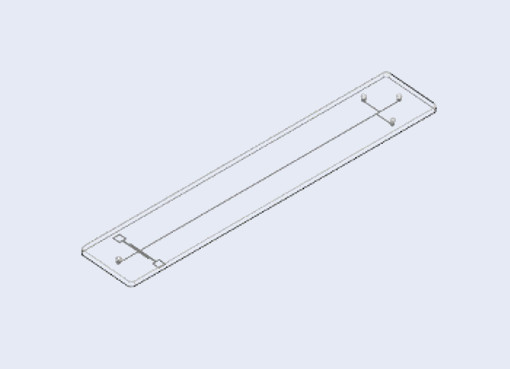
Schematic Drawing of Contact Mode: Through-Holes
![]()
Non-Contact Mode
The variation with Luer-interfaces includes electrodes that can be used for the detection of charged molecules, for example. The material of the electrodes is 10 nm titanium and 100–150 nm gold. The electrodes are placed on the cover lid and assembled towards the atmosphere, resulting in electrode and the liquid to be analyzed having no contact. The use of these chips with this electrode arrangement requires a special instrumentation set-up. This detection technology is called C4D (capacitively coupled contactless conductivity detection).
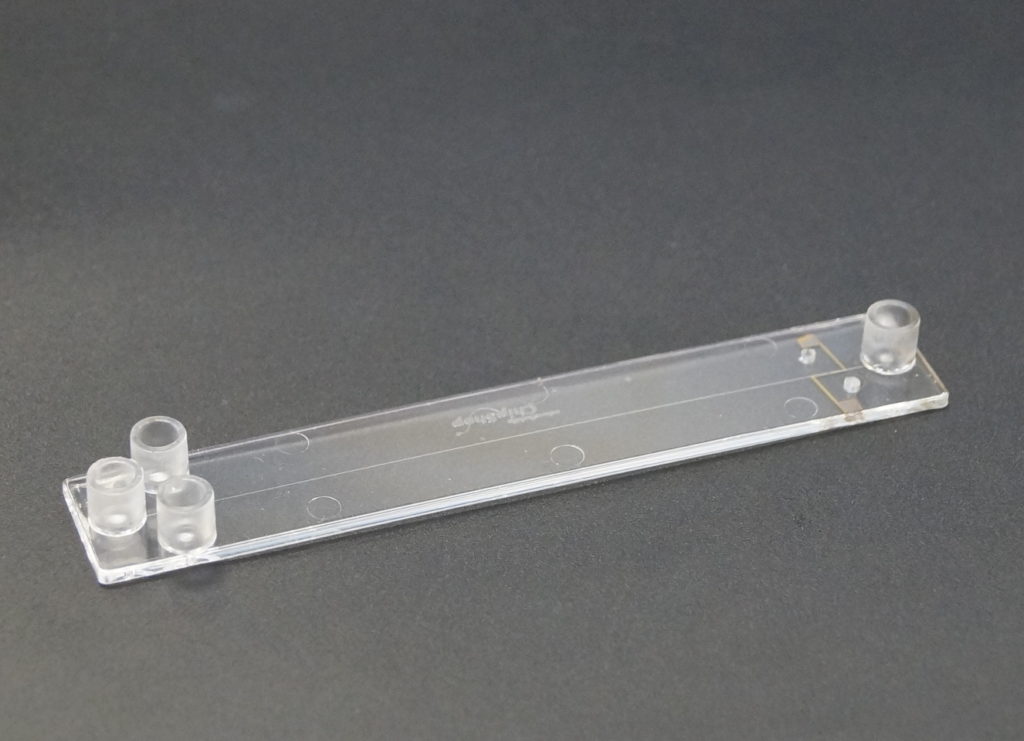
Non-Contact Mode – Luer Interface
